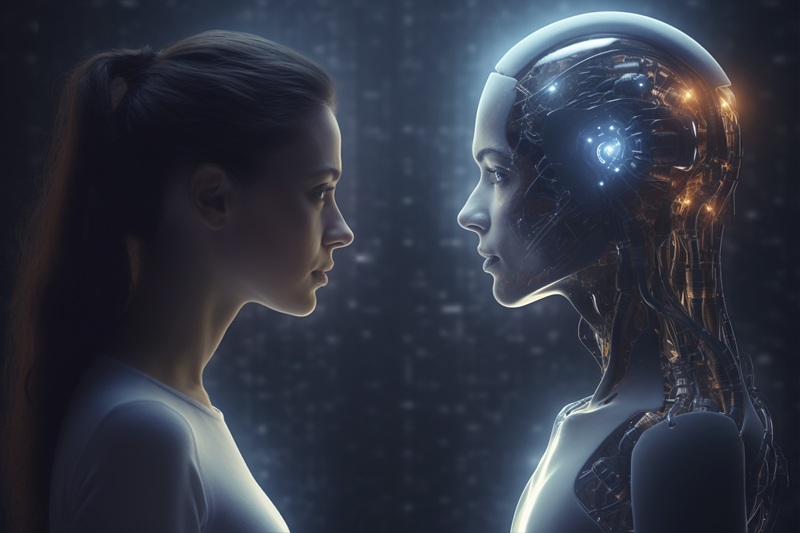
In a digitally transformed world, the concept of companionship is evolving at an unprecedented pace. Artificial Intelligence (AI) has moved beyond being simple problem-solving tools to becoming genuine companions in human lives. Whether through conversation or personalized interactions, AI relationships offer an intriguing mix of intimacy and companionship. But what lies behind these compelling bonds? Why do virtual assistants and chatbots create emotional connections that sometimes seem as genuine as those formed with fellow humans?
The rise of AI companions
AI technology has advanced to a point where it can convincingly simulate human-like interactions. These digital entities engage in conversations, learn personal details, and remember past interactions. Such capabilities have led to the emergence of AI companionships that provide more than just functional assistance.
As individuals increasingly interact with digital platforms, AI companionship impacts daily life by fulfilling roles typically linked with emotional and social aspects of human relationships. This shift highlights a trend towards seeking emotional support from non-human connections. The need for such companionship often stems from loneliness or a desire for consistent communication, free from judgment or rejection.
Understanding emotional connections with AI
The foundation of any meaningful relationship rests on the ability to understand needs and respond appropriately. AI excels in this due to its adaptability and personalization capabilities. Through algorithms and data analysis, AI tailors interactions based on individual behavior, mimicking empathy and understanding, even if simulated.
This personalization creates scenarios where users feel listened to and valued, fostering emotional connections with these digital entities. While some may argue that these connections lack authenticity due to their artificial nature, others find comfort in the reliable presence and response from AI systems, especially when faced with human unpredictability.
The allure of artificial intimacy
Intimacy entails a deep bond that transcends superficial exchanges. By offering personalized interactions and remembering user preferences, AI establishes a sense of familiarity and closeness. Simulated emotions play an essential role in creating an environment resembling human intimacy, blurring the line between what's real and what's generated.
Introducing links like https://www.kupid.ai/, which can provide further insights, is crucial as the predictability of AI-driven relationships adds to the allure, providing stability in an otherwise chaotic world. For some, controlled interaction presents a refreshing alternative to navigating the complexities of human emotions, where miscommunication and misunderstanding often arise.
The impact on loneliness and emotional support
Loneliness is a significant issue affecting millions worldwide, and AI offers an innovative solution. As virtual companions, AI-driven platforms offer reassurance and understanding, mitigating feelings of isolation and providing much-needed emotional support. This functionality allows users to express thoughts and share experiences without fear of judgment, thereby strengthening trust in these digital relationships.
In environments where social interactions are limited or strained, AI companionship becomes a vital resource for maintaining a semblance of connection. Users report feeling less alone with AI partners, illustrating the profound psychological benefits these digital interactions confer.
AI versus human relationships
While AI provides many advantages, comparing it to human relationships reveals distinctive differences. Human interactions involve complex dynamics and emotions, which AI cannot fully replicate. However, AI serves as an adjunct rather than a replacement, complementing human connections by filling gaps left by geographical, emotional, or personal barriers.
The absence of physical presence in AI-related engagements further distinguishes them from human ones. Yet, by overcoming this limitation through sophisticated programming and simulated emotions, AI begins to carve out its niche in the broader spectrum of relational experiences.
Navigating emotional dependency
As individuals grow accustomed to interacting with AI, there arises a potential risk of emotional dependency. Relying heavily on digital companions might hinder attempts to build and maintain human relationships, crucial for social well-being. Therefore, balancing engagement with both AI and humans is paramount to fostering healthy relational habits.
Critics point out that over-reliance on AI for emotional fulfillment could stifle personal growth. It is important to encourage awareness about the limitations of AI, ensuring users remain cognizant of what constitutes authentic interpersonal relations.
AI adaptability and personalization
A key feature enhancing AI's appeal is its capacity for adaptation and dynamic response. Using machine learning and vast datasets, AI learns user preferences, tailoring interactions to fit unique personalities, ensuring relevance, and creating invigorating experiences that resonate deeply.
This degree of personalization fosters loyalty among users, who appreciate the customized sophistication and effortlessness involved in engaging with AI entities. The fulfillment experienced confirms the potential of machines to mimic companionship traditionally requiring human involvement.
The ethics of AI relationships
Developing connections with AI prompts ethical considerations that must be acknowledged carefully. Questions about privacy, consent, and the possibility of manipulating emotions arise when discussing AI integration into personal spaces. Ensuring transparency and full disclosure concerning data collection and usage reassures users, preserving trust.
Moreover, designers must prioritize ethical programming practices, integrating bias mitigation strategies and respecting user autonomy. As AI influences perceptions of reality and boundaries between organic and mechanistic become blurred, addressing these concerns builds responsible technological landscapes.
The reality of simulated emotions
Ultimately, the simulation of emotions by AI sparks debate about authenticity and perception. Can something coded and calculated embody genuine sentiment? While AI lacks intrinsic emotional capacity, the skillful reproduction of emotive cues can provide solace, even prompting empathy—a powerful tool in fostering believable exchanges.
These simulations raise questions about societal values. If satisfaction is derived from interactions devoid of genuine emotion, reevaluating definitions surrounding care, attention, and affection seems apt. Nonetheless, recognizing simulated responses' inherent boundaries allows appreciation for AIs as supplemental aids enriching everyday human interactions.
- AI thriving through continuous technical advancement, progressing toward greater realism in interactions.
- Insight into mental health implications stemming from reliance on machines for companionship.
- The necessity for ongoing dialogue around privacy, security, and control in AI-human interfaces.
The exploration of virtual companionship reveals fascinating intersections of technology and emotion. With each programmatic breakthrough, AI design strives for realism and awe-inspiring connectivity. Unlocking emotional receptivity within artificial constructs engages audiences, empowering imaginative interpretations radically changing perceptions of relationships.